Shirebrook STW (2017)
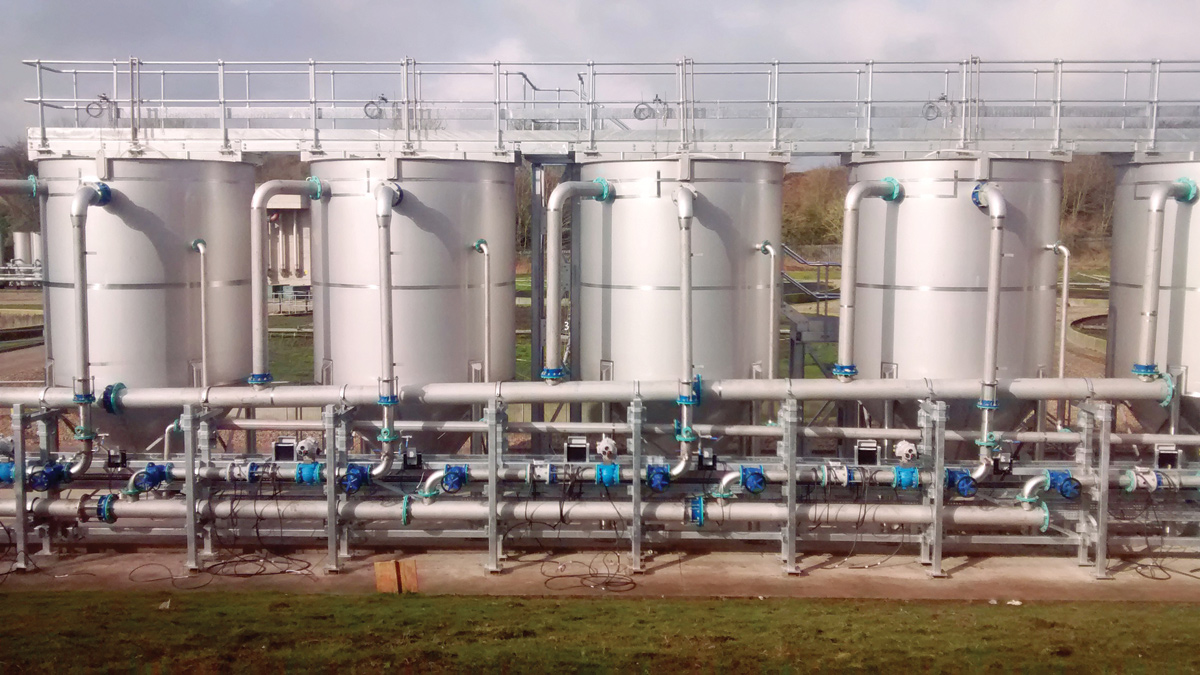
Pipework skids installed electrical installation underway - Courtesy of NMCNomenca
Shirebrook STW is located approximately 5 miles north of Mansfield town centre and caters for a population equivalent (PE) of 12,000. As part of the AMP6 Chemical Investigations Programme, Severn Trent Water is required to carry out a full scale trial of a ‘proprietary’ iron dosed sand filter plant on a works serving between 10,000 and 50,000 PE. The trial is to assess the effectiveness of the process at removing priority hazardous substances/hazardous substances/specific pollutants (PHS/HS/SPs) as defined under the Water Framework Directive (WFD) – in this case cadmium. In addition, WFD modelling has identified there is a high probability that Shirebrook STW will be subject to a phosphorus consent of approximately 0.2mg/l. Severn Trent Water promoted a scheme to address this and the requirements of the trail in March 2015 and appointed their framework design and build contractor, NMCNomenca (now Galliford Try), to carry out the work.
Innovation
In order to satisfy the requirements of the chemical investigation programme and meet the new ultra-low phosphorus discharge consent, Severn Trent Water identified a new technology which promised to fulfil these requirements. Evergreen Water Solutions Ltd provided this technology and process support.
The innovation was not the technologies being employed but how the technologies were integrated. The core of the solution was fundamentally a sand filter which employed chemical dosing and specially selected/graded sand. Working closely with Evergreen Water Solutions Ltd, Design for Manufacture and Assembly (DfMA) and 3D modelling techniques have been embraced from the outset of the project. The challenge to the team was to modularise the entire plant including the pipework for off-site manufacture allowing for on-site assembly. The outcome from this challenge was the creation of pump skids, prefabricated pipework racks, preassembled access steelwork modules, and containerised control, blower and dosing equipment.
The DfMA approach led to the ability to halve the normal M&E installation time, removing some 20 crane days, reducing working at height, enabling a high quality and right first time assembly requiring no redesign/rework on site.
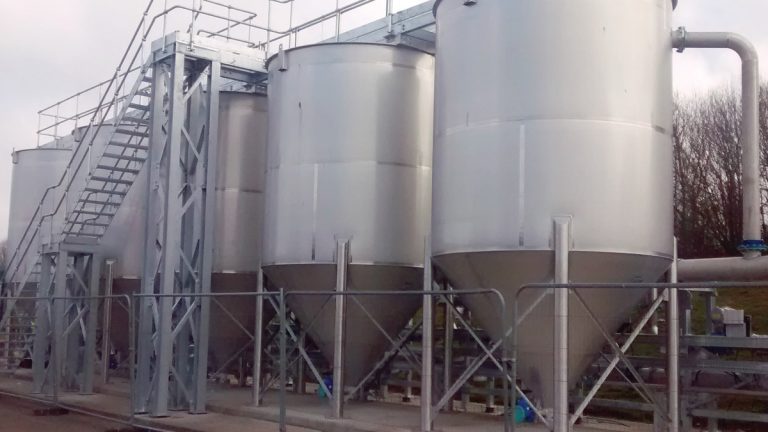
Modular access steelwork installed – Courtesy of NMCNomenca
Sustainability
Generally, following completion of a trial, and collection of the required data, the plant would normally be mothballed. Not content to accept that any investment would be written off, the team identified a site where there would be a need for intervention and if the trial proved successful, no further investment would be required.
Whilst the project had identified significant capital savings the team did not stop there; they continued to explore further opportunities for innovation within the design. As an example the original location of the plant required retaining walls to be constructed which would have involved a large muck shift being undertaken. This was challenged and a new location was identified reducing the muck shift by 75% and removing the need for retaining walls, significantly reducing the project’s carbon footprint.
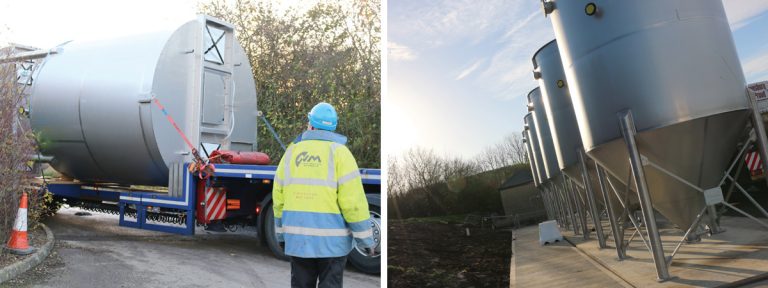
(left) Filter being delivered – only just fits! and (right) all filters in position – Courtesy of NMCNomenca
Planning and communication
Innovation by its very nature requires significant levels of planning and communication to ensure that there is a clear direction in order to realise the innovative solution, with the added challenge of time, as there was a requirement for a minimum period of data gathering.
The key to achieving the challenging programme, was to ensure that all parties were fully aware of their obligations and were committed to delivering the project on time. All parties involved, including our key subcontractor delivering a significant proportion of the project, engaged early in the process. Using tools such as collaborative planning and regular progress meetings, the project was delivered within the programme timescales allowing STW to start the data gathering phase on time.
Safety
Safety in design was a key principle in the development of the project ensuring that we meet our obligations under CDM 2015 as principal designer and principal contractor. There are a number of examples of this; fundamentally the approach of DfMA significantly reduced on site construction risks.
By modularising the plant, including access platforms which were transported to site in the largest sections possible (with handrail fitted and flooring already secured), the requirement to work at height to construct these elements was reduced.
Further consideration was given to the operability and ergonomics within the design of areas such as the pipework. In these instances there were significant controls required within the pipework design; these controls were positioned at waist height, with instruments placed at eye level to aid operators in their duties.
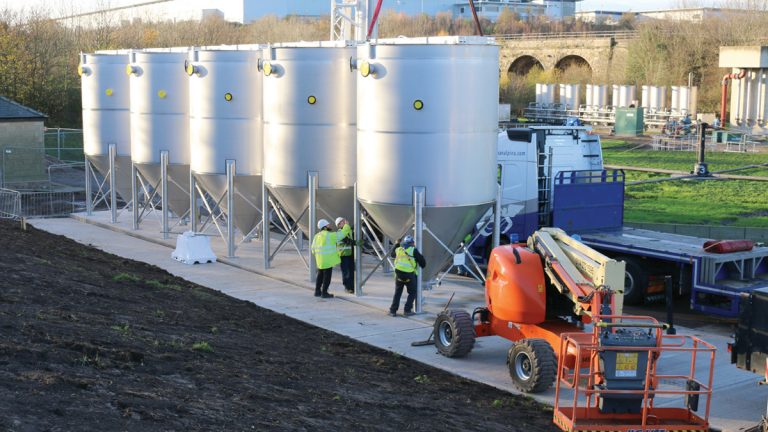
Final filter being positioned – Courtesy of NMCNomenca
Project management and procurement
The scheme was critical to Severn Trent Water’s AMP6 chemical investigation programme. Therefore the scheme was required to be completed on site by the end of June 2016. This posed a significantly challenging programme for both the design and construction teams.
Severn Trent Water promoted their solution and engaged with NMCNomenca at an early stage in the project conception. This enabled both parties to work collaboratively to progress the design in order to achieve the requirements of the trail in a timely manner.
This collaborative approach by the client, design and build contractor and supply chain throughout the life of the project enabled the innovative solution to be delivered within the challenging timescale.
Application of engineering principles and judgement
Normal construction practices for the delivery of this form of plant would have been to construct the majority of the pipework, control and dosing infrastructure in situ. This however would not have been achievable within the time constraints, as the design period was likely to take a significant part of the project duration as this was the first of its kind, with all elements being bespoke. The innovative solution identified the key aspects of the plant that would have a major implication on any civil engineering design. In this case the loadings from the filters were the principal controlling factor.
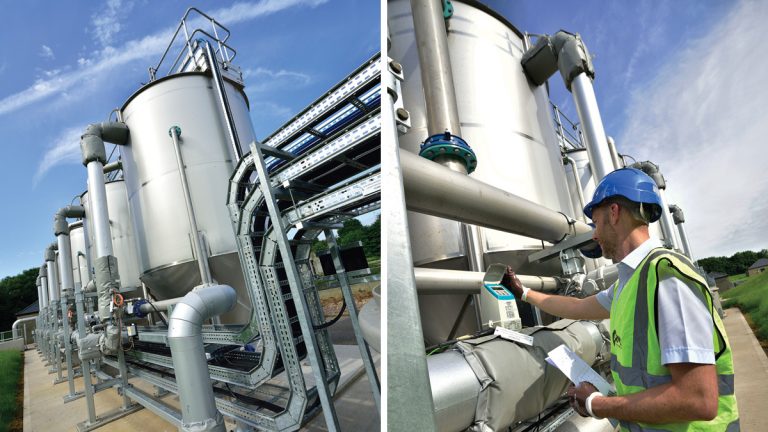
(left) Pipework skids installed electrical installation underway and (right) instruments installed at ergonomic level – Courtesy of NMCNomenca
Whole project impact
The project has had a positive impact on improving the water quality within the River Meden through reducing the levels of chemicals contained within the final effluent entering the watercourse, thus reducing Severn Trent Water’s environmental impact. This watercourse provides a valuable habitat for wildlife and community resources for anglers and the like.
The level of capital investment required by Severn Trent Water was minimised through effective and efficient manner in which the project team promoted the trail. As a result this has allowed Severn Trent Water to make further investment within the business to tackle and improve water quality and service to the wider community.





